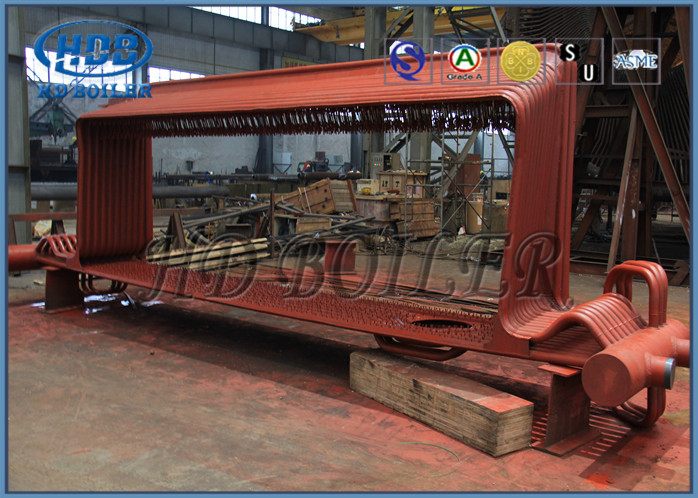Zhangjiagang HuaDong Boiler Co., Ltd. |
|
Verified Suppliers
|
|
Boiler industry Cyclone separator separately deliver mandrel embedded inside carbon steel
Description
1.In spite of what some would like us to believe, dust collection cyclones are simple tanks with no moving parts and have been used for dust separation for over seventy years.
2.They are made up of just a few parts, an air inlet, an outer cylinder, an air outlet, and cone with dust chute that connects to a collection bin with flex hose.
3.Dirty air comes in through an inlet and spins quickly around. This spinning throws the heavier particles outward to the cyclone walls.
4.Airflow on the cyclone walls is slowed by friction. Particles get trapped in the slower moving air then gravity pulls them down. As the air continues to spin it slows and drops downward. The cone on the bottom of the cyclone forces that slowing air to keep the particles pressed tightly to the walls.
5.Those particles continue to slide downward and eventually exit out a dust chute into the collection bin. The dust chute is sealed tightly to the bottom of the cyclone with no air leaks to stir up the collected dust. At a certain place inside the cyclone called a neutral point, the spinning clean air reverses direction and comes up through the center of the cyclone then exits through the cyclone outlet.
Process
1.Although just about any cyclone design will separate the heavier
particles, it takes quite a bit of work to build a design that will
efficiently separate off most of the finest particles so they don't
clog our filters.
2.Any air turbulence from these parts will dramatically increase resistance and significantly reduce fine particle separation efficiency.
3.A smooth inlet is needed to carefully start the air stream right on the side of the cyclone. The smaller the diameter of a cyclone, the faster the air must move and the better the separation.
4.Likewise, the smaller the cyclone diameter the larger the blower needed to overcome the resistance. It takes more work to push air in smaller circles.
5.Cyclones with longer cones provide better the fine material separation. Likewise, longer cones create more resistance because the air has to run more revolutions.
6. Finally, the larger the cyclone outlet, the less resistance and slower the airflow making for much finer the separation.
Types
1.Tangetial inlet
2.Axial inlet
3.Scroll inlet
Advantages
1.The collected product remainls dry
2.Can handle sticky and tacky solids with proper liquid irrigation
3.Low maintenance cost
4.Very compact in most applications
5.Can be used under very extreme processing conditions
6.No moving parts
7.Constant Pressure Drop
8.Can be equipped with erosion or corrosion resistant
9.Can be fabricated with plate metal
10.Separate liquid or solid particulates,sometiome both in combination with proper design
Product display

